A broken window can quickly become a safety concern, allowing unwanted elements such as weather, pests, or even intruders to enter your home. Properly securing a broken window is essential to ensure the safety and comfort of your living space until it can be permanently repaired or replaced. This guide will walk you through simple and effective steps on how to secure a broken window.
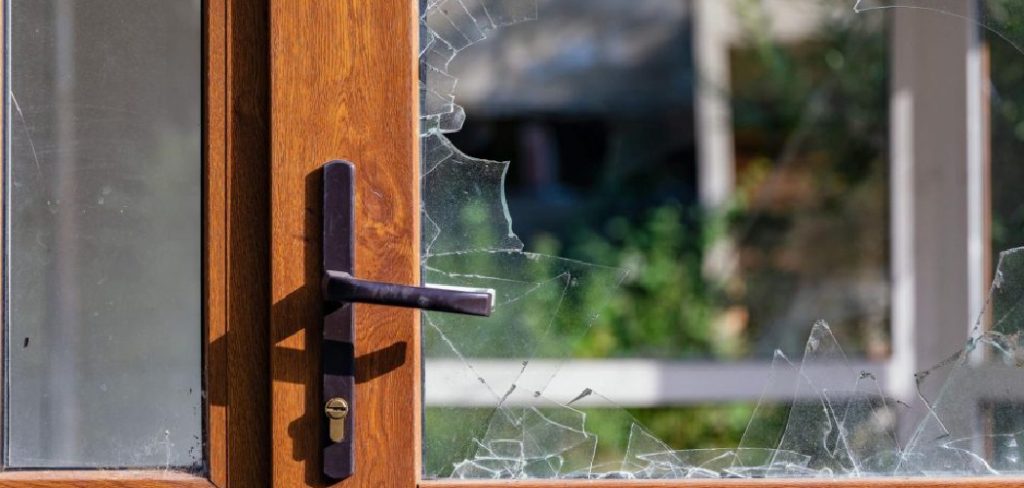
Why Securing a Broken Window is Important
Securing a broken window is crucial for several reasons. First and foremost, it helps protect your home from further damage caused by external elements such as rain, wind, or debris, which could compromise the integrity of your property. Additionally, an unsecured window poses a significant security risk by potentially providing intruders with easy access to your home.
Broken windows can also allow insects, rodents, or other pests to enter, creating an additional nuisance. Lastly, taking swift action to secure the window helps maintain the overall comfort and safety of your household, ensuring peace of mind while you arrange for a more permanent solution.
Tools and Materials Needed
To effectively secure a broken window, you will need the following tools and materials:
- Heavy-duty gloves to protect your hands from sharp edges and broken glass.
- Safety goggles to shield your eyes from potential hazards while working.
- Broom and dustpan or a vacuum cleaner for safely cleaning up broken glass.
- Measuring tape to ensure precise measurements for temporary coverings.
- Plywood or heavy-duty plastic sheeting for covering the broken window securely.
- Utility knife or scissors for cutting materials to the desired size.
- Screwdriver and screws or duct tape for attaching and securing the covering.
- Sealant or weatherproof tape to help keep the temporary fix watertight.
Having these tools and materials on hand will ensure that you can address the issue promptly while minimizing further risks or damage.
10 Methods How to Secure a Broken Window
Method 1: Remove Loose Glass Pieces for Safety
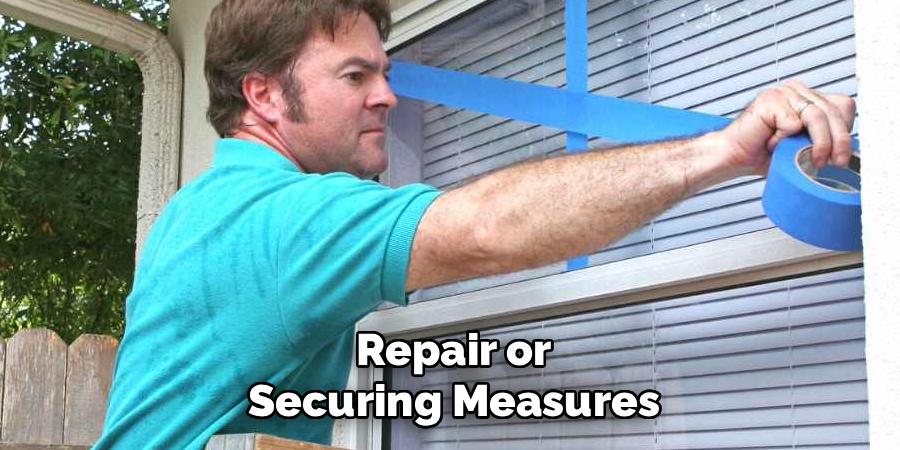
Before any repair or securing measures can be applied, it is essential to remove all loose shards and fragments from the broken window. Leaving sharp glass in place creates a constant hazard, as vibrations, wind, or even slight pressure could cause pieces to fall and injure someone. Always wear heavy-duty gloves and safety goggles when handling glass.
Collect larger shards with pliers or gloved hands, and use a broom and dustpan to sweep up smaller fragments. Dispose of the broken glass in a thick, puncture-resistant container. This step ensures the window area is safe to work on and reduces the chance of further accidents.
Method 2: Cover the Window with Plastic Sheeting
One of the most common and effective ways to secure a broken window is by covering it with durable plastic sheeting. Heavy-duty materials such as polyethylene or a thick trash bag can serve as a temporary barrier against rain, wind, and insects. Cut the plastic slightly larger than the window opening, then secure it tightly with duct tape around all edges.
To increase effectiveness, stretch the plastic taut so it does not flap in the wind. While this is not a long-term solution, it provides a quick and inexpensive way to protect your home until permanent repairs are made.
Method 3: Use Plywood for Strong Temporary Security
For a sturdier solution, especially when the entire pane is missing, plywood is one of the best materials to secure a broken window. Cut a sheet of plywood that extends at least an inch beyond the window frame on all sides. Position it against the frame and screw it into place using wood screws for wooden frames or masonry screws for brick or concrete structures.
Plywood not only prevents intruders from exploiting the broken entry point but also offers protection against strong winds and heavy rain. Though more labor-intensive, this method provides a higher level of safety and durability than plastic sheeting.
Method 4: Apply Heavy-Duty Tape Over Cracks
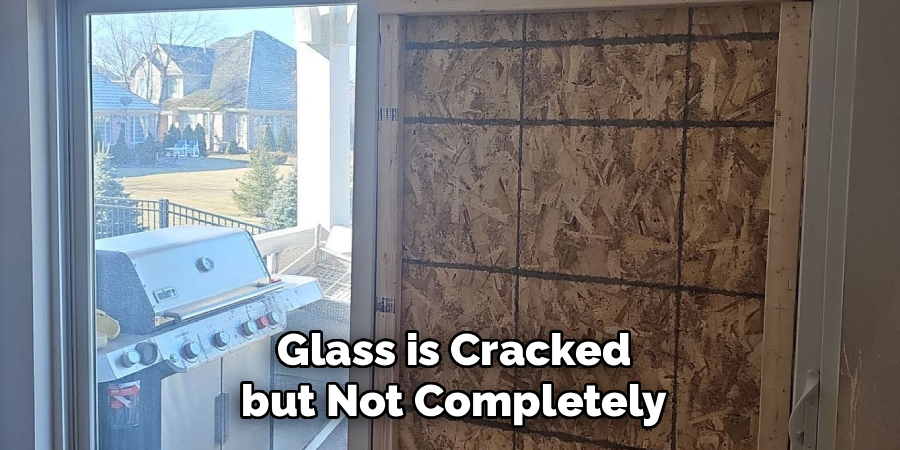
If the glass is cracked but not completely shattered, applying heavy-duty tape such as duct tape or packing tape can help hold it together temporarily. Place strips of tape both vertically and horizontally across the crack, covering the damaged area thoroughly.
Taping prevents the crack from spreading further under pressure and reduces the chance of small shards falling out. This method is best used as a temporary measure while waiting for professional replacement. Though it may not look attractive, it prevents the situation from worsening and keeps the glass relatively stable.
Method 5: Install a Temporary Window Film
Clear window security film is another option for stabilizing broken glass. These films are designed to reinforce glass surfaces, holding shards together if the pane is struck. Applying film to a broken or cracked window helps maintain its structural integrity and prevents the glass from falling apart. The film also provides an extra barrier against intruders and weather.
This method is particularly useful if the break is small and you want a discreet solution that does not obstruct visibility. Although not as secure as plywood, it provides an elegant temporary option while waiting for repairs.
Method 6: Secure with Cardboard or Fiberboard
For a quick fix that requires minimal tools, cardboard or fiberboard can be used to cover a broken window. Though not as durable as plywood, these materials offer basic protection against insects, dust, and weather.
Cut a piece to the size of the window opening and secure it with duct tape or nails, depending on the frame type. Layering multiple sheets of cardboard increases strength and insulation. This is particularly effective in interior rooms or less-exposed windows, though it should only be used as a short-term solution until proper replacement is available.
Method 7: Reinforce with Metal Grilles or Bars
For situations where security is a major concern, installing temporary metal grilles or bars over the broken window frame provides strong protection. This method prevents unauthorized entry while still allowing airflow.
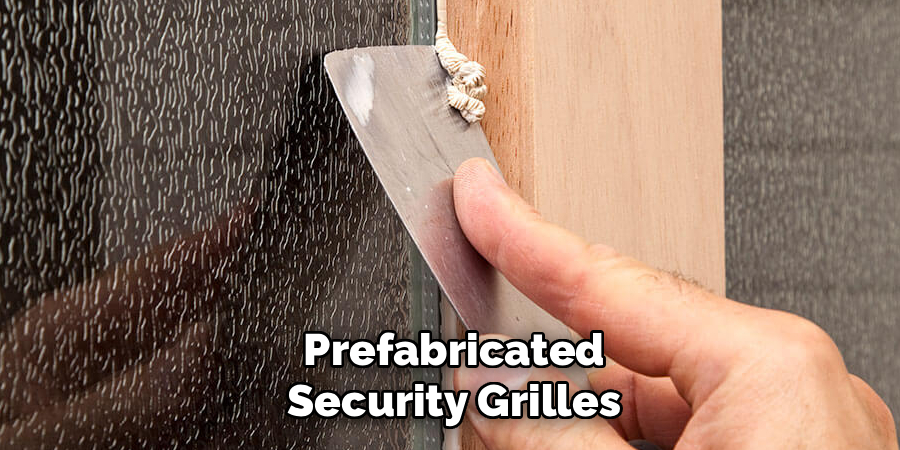
Prefabricated security grilles are available in adjustable sizes and can be mounted directly onto the frame or surrounding wall. While grilles do not block rain or cold, they are ideal when safety from intrusion is the primary goal. Combining grilles with plastic sheeting or plywood creates a more comprehensive temporary solution.
Method 8: Use Caulk or Sealant for Small Breaks
If the window only has minor chips or small holes, sealing the damaged area with caulk or silicone sealant can prevent air and water from entering. This method is especially useful for single-pane windows where replacing the entire glass is not immediately necessary.
Simply clean the damaged area, apply the sealant generously, and smooth it out with a putty knife. The sealant hardens to form a waterproof and airtight barrier. Although it does not restore structural strength, it prevents the damage from worsening and provides insulation until a professional fix is arranged.
Method 9: Create a Temporary Window Using Plexiglass
Plexiglass, or acrylic sheets, offer a lightweight but durable alternative to real glass and can serve as a temporary replacement pane. Measure the window opening carefully and cut the plexiglass to size. Place it within the frame and secure it with screws or adhesive strips.
Plexiglass is shatter-resistant, making it a safer option than cracked glass. It also allows light to pass through, preserving visibility. This method can last for weeks or even months, providing both security and weather protection while waiting for professional repairs or custom glass orders.
Method 10: Reinforce Security Around the Broken Window
While directly securing the broken window is essential, additional reinforcement around the area enhances safety. Lock doors near the damaged window and use window locks on adjacent panes. Install motion sensor lights outside to deter potential intruders who might exploit the weakness.
If the broken window is in a vulnerable area, consider temporarily relocating valuables away from it. These extra measures create layers of security, ensuring your home remains protected even while the window itself is awaiting full repair or replacement.
Maintenance and Upkeep
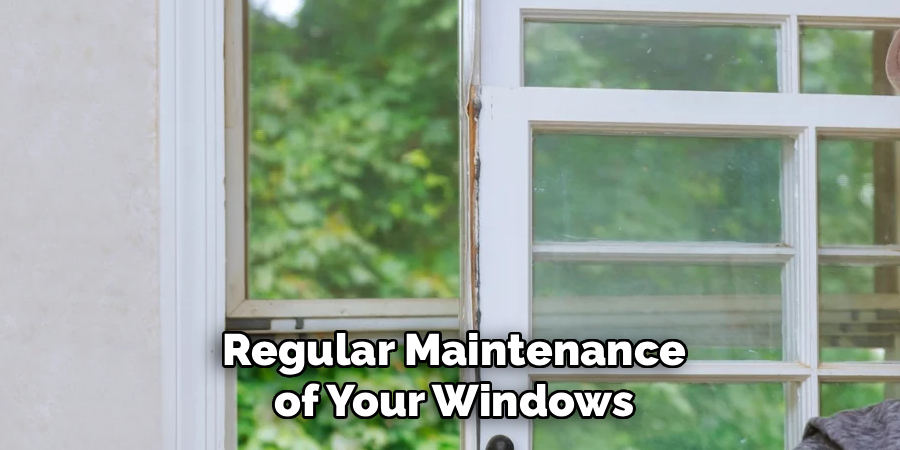
Regular maintenance of your windows is key to preventing damage and extending their lifespan. Start by cleaning your windows frequently to remove dirt, grime, and debris that can compromise their function and appearance. Inspect window frames and seals for wear, as cracks or gaps can allow drafts and moisture to seep in, causing further issues.
Lubricate hinges, tracks, and locks to ensure smooth operation and prevent rust or sticking over time. Additionally, consider applying weatherproof sealant to protect against the elements. By staying proactive with upkeep, you not only enhance the longevity of your windows but also maintain the overall energy efficiency and security of your home.
Conclusion
Securing a broken window promptly is crucial to maintaining safety, security, and comfort in your home. Each of the methods above offers a unique solution depending on the severity of the damage, the resources available, and the urgency of the situation.
From simple tape or plastic coverings to sturdier plywood and plexiglass replacements, every method serves as an effective temporary safeguard. Now that you know how to secure a broken window, try it yourself today and feel good about completing such a big DIY job!
